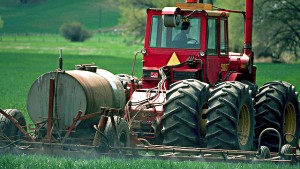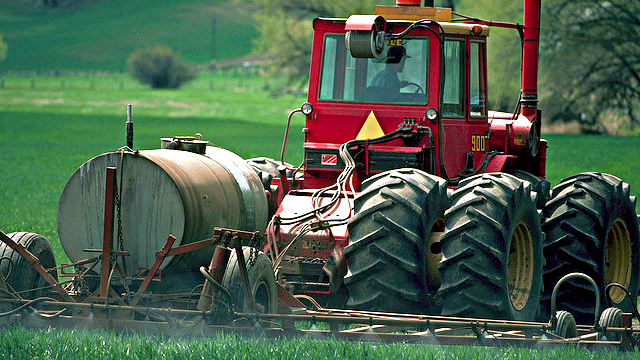
Recent headlines have brought to light some of herbicides’ unintended effects. The herbicide Imprelis, primarily used on golf courses and the like, has been linked to the death of conifers throughout the east and the midwest. The safety of the widely used herbicide Roundup has also been called into question. Herbicides can provide farmers and gardeners with advantages over unwanted weeds—but they also come with drawbacks.
When DuPont first introduced the herbicide Imprelis in 2010, it was seen as a pretty environmentally friendly option. It is really effective at preventing the growth of weeds like dandelions and ivy. It affects plants’ hormone receptors, and it works at low concentrations. Unlike other herbicides, hot temperatures or rainfall just after application do not make Imprelis ineffective—a benefit for lawn care professionals, who otherwise have to time the application of herbicides according to the weather report. But Imprelis doesn’t bind to the soil and can leach into groundwater, two reasons why the state of New York has not approved it. (California has not approved it either.) Because of these characteristics, the herbicide being taken up by nearby trees through their root systems. As a result, conifers’ needles turn brown, and some trees die. The chemicals in Imprelis stick around in the grass clippings, creating killer compost that should go to the landfill rather than the compost bin or mulch pile. We haven’t heard the end of the story of Imprelis.
We will likely also hear more about Roundup, a big player manufactured by Monsanto. This story in the Huffington Post describes several studies that indicate that the herbicide causes birth defects. Roundup and other similar herbicides contain glyphosate, which causes reproductive problems in adult animals and birth defects in animals’ offspring. Organisms like rabbits can be exposed when herbicides are applied and when they eat the plants that have been treated. Lab studies have shown that exposure to glyphosate results in malformations in frog and chicken embryos. And, lab studies show that Roundup also poses problems for human embryonic and placental cells. Herbicides that contain glyphosate are hugely popular, because they’re so effective. In the last year for which data are available, 2006-2007, the US agricultural industry applied 180 to 185 million pounds of glyphosate. From 2005 to 2007, non-agricultural use added another 8 to 11 million pounds to the ecosystem. This chemical is increasingly ingrained in the US agricultural system: farmers purchase genetically modified seeds that are resistant to Roundup (such as Roundup Ready Soybeans), and then spray Roundup on the crops. These methods allow for much higher crop yields than organic agriculture, and are cost-effective for big farms. Without the advantages that herbicides provide, farms cannot compete.
Eradicating weeds is a challenge, and herbicides are a big part of fighting that battle. We have a complex relationship with weeds—check out this great conversation about weeds on Science Friday last week. Herbicides give us some key advantages over unwanted weeds. These advantages come with drawbacks. The two herbicides under question are primarily used by industry—lawn care professionals and big ag farmers—rather than individuals. But the average citizen uses herbicides on his or her home lawn, too. Do you use herbicides? Why or why not?
